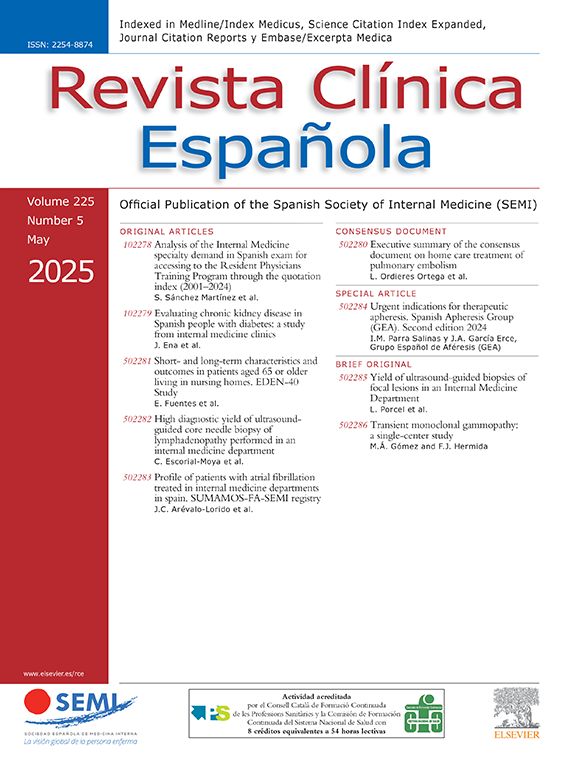Cardiovascular risk estimation is an essential step in reducing the onset of adverse cardiovascular events. It helps to identify healthy patients who will benefit most from treatment for atherosclerotic risk factors. The authors pretend to assess the Cardiovascular risk in an apparently healthy Portuguese population and evaluate the degree of control of LDL-cholesterol.
Materials and methodsThis cross-sectional study assessed the cardiovascular risk level in a Portuguese population aged 40 to 69 years, using the Systematic Coronary Risk Evaluation 2 algorithm. This research received no specific funding.
Results12076 apparently healthy patients were included, median age of 53.8±8.03 (min. 40; max. 69), 58.7% women and 41.3% men. Based on the Systematic Coronary Risk Evaluation 2 calculation, 59.5% of patients belonged to the low moderate risk, 35.1% to the high risk group, and 5.4% to the very high risk group.
Based on cardiovascular risk stratification, 64.6%, 94.1%, and 98.5% of the patients with low-moderate, high, and very high cardiovascular risk were above the LDL-cholesterol target, respectively. Of those with high and very high cardiovascular risk, 94.7% were above LDL-cholesterol goal in spite that 35.9% were under statin treatment.
ConclusionIn this real-life setting study, over a third of the population had high and very high cardiovascular risk, of which 94.7% were above the LDL-cholesterol goal. The study highlights that a large part of apparently healthy patients could benefit from a therapeutic intervention to reduce the risk of the onset of adverse cardiovascular events.
La estimación del riesgo cardiovascular es una medida esencial para reducir la aparición de episodios cardiovasculares adversos. Ayuda a identificar a los pacientes sanos que más se beneficiarán del tratamiento para los factores de riesgo aterosclerótico. Este estudio pretende evaluar el riesgo cardiovascular en una población portuguesa aparentemente sana y evaluar el grado de control del colesterol LDL.
Materiales y métodosEn este estudio transversal se evaluó el nivel de riesgo cardiovascular en una población portuguesa de entre 40 y 69 años, utilizando el algoritmo Systematic Coronary Risk Evaluation 2. Esta investigación no ha recibido financiación externa.
ResultadosSe incluyeron 12.076 pacientes aparentemente sanos, con una mediana de edad de 53,8±8,03 (mín. 40; máx. 69), el 58,7% mujeres y el 41,3% varones. Según el cálculo del algoritmo Systematic Coronary Risk Evaluation 2, el 59,5% de los pacientes pertenecían al grupo de riesgo bajo-moderado, el 35,1% al grupo de riesgo alto y el 5,4% al grupo de riesgo muy alto.
Según la estratificación del riesgo cardiovascular, el 64,6%, el 94,1% y el 98,5% de los pacientes con riesgo cardiovascular bajo-moderado, alto y muy alto tenían un nivel de colesterol LDL por encima del objetivo, respectivamente. De los pacientes con riesgo cardiovascular alto y muy alto, el 94,7% tenía un nivel de colesterol LDL por encima del objetivo, a pesar de que el 35,9% recibía tratamiento con estatinas.
ConclusiónEn este estudio en condiciones reales, más de un tercio de la población tenía un riesgo cardiovascular alto y muy alto, de la cual el 94,7% tenía un nivel de colesterol LDL por encima del objetivo. Este estudio señala que una gran parte de los pacientes aparentemente sanos podría beneficiarse de un tratamiento terapéutico para reducir el riesgo de aparición de episodios cardiovasculares adversos.
Article
Diríjase desde aquí a la web de la >>>FESEMI<<< e inicie sesión mediante el formulario que se encuentra en la barra superior, pulsando sobre el candado.

Una vez autentificado, en la misma web de FESEMI, en el menú superior, elija la opción deseada.

>>>FESEMI<<<








